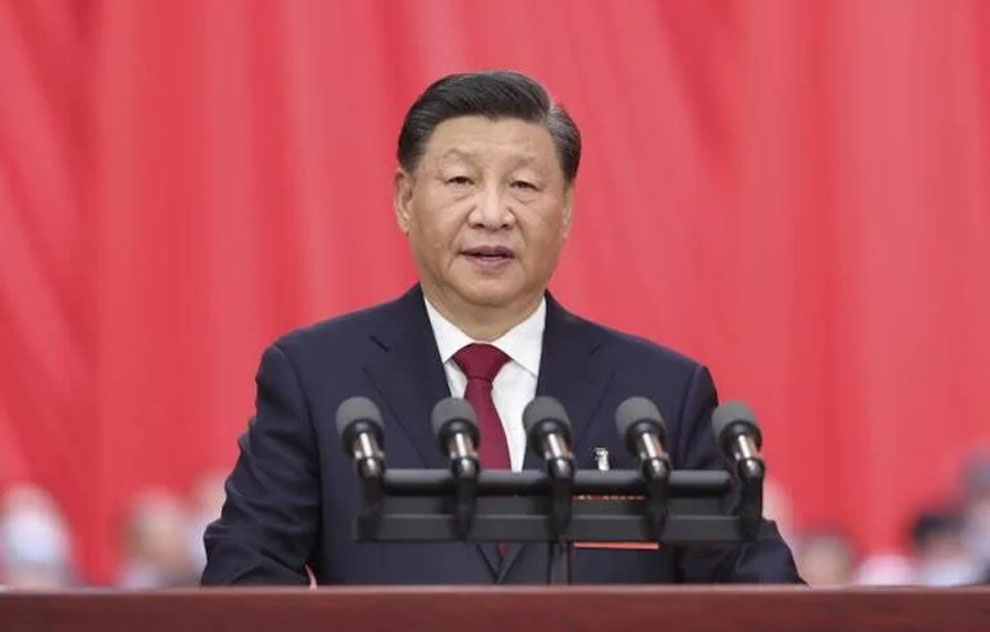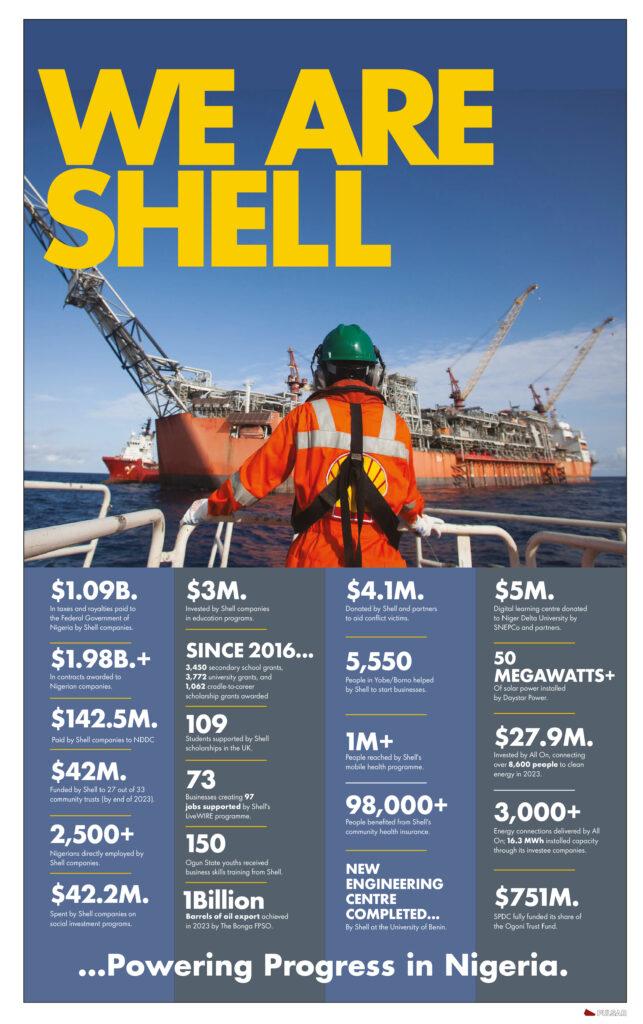International
Putin gives conditions for Ukraine ceasefire

Putin gives conditions for Ukraine ceasefire
Russian President Vladimir Putin said he agreed with the idea of a ceasefire in Ukraine, but that “questions” remained about the nature of a truce as he set out a number of tough conditions.
The Russian president was responding to a plan for a 30-day ceasefire, which Ukraine agreed to earlier this week after talks with the US.
Ukrainian President Volodymyr Zelensky described Putin’s response to the plan as “manipulative” and called for more sanctions on Russia.
Meanwhile, the US placed further sanctions on Russian oil, gas and banking sectors.
Russian officials said Putin was expected to hold talks on the ceasefire on Thursday evening with US President Donald Trump’s special envoy Steve Witkoff, who had flown to Moscow earlier that day.
It is not clear whether that meeting actually took place. On Friday, Russia’s state-run media quoted the air traffic monitoring website Flightradar as saying the plane believed to be carrying Witkoff had left Moscow.
Moscow and Washington have not commented on the issue.
Late on Thursday and overnight, both Russia and Ukraine reported new enemy drone attacks.
Ukraine said seven people – including children – were injured in the north-eastern city of Kharkiv.
Russia reported a large fire at an oil facility in the southern city of Tuapse.
Speaking at a news conference in Moscow on Thursday, Putin said of the ceasefire proposal: “The idea is right – and we support it – but there are questions that we need to discuss.”
READ ALSO:
- New Zealand university offers up to $10,000 scholarship for international students
- China hosts Iran, Russia for nuclear talks
- Tinubu backs Obasa to remain Lagos speaker, ends assembly crisis
A ceasefire should lead to “an enduring peace and remove the root causes of this crisis”, Putin said.
“We need to negotiate with our American colleagues and partners,” he said. “Maybe I’ll have a call with Donald Trump.”
Putin added: “It will be good for the Ukrainian side to achieve a 30-day ceasefire.
“We are in favour of it, but there are nuances.”
One of the areas of contention is Russia’s western Kursk region, Putin said, where Ukraine launched a military incursion last August and captured some territory.
He claimed Russia was fully back in control of Kursk, and said Ukrainian troops there “have been isolated”.
“They are trying to leave, but we are in control. Their equipment has been abandoned.”
“There are two options for Ukrainians in Kursk – surrender or die.”
On Wednesday, Ukraine’s top commander Oleksandr Syrskyi said Ukrainian troops would hold defensive positions in the Kursk region “as long as it is expedient and necessary” despite “increased” pressure from Russian forces.
At Thursday’s press conference, Putin also outlined some of his questions over how a ceasefire would work. He asked: “How will those 30 days be used? For Ukraine to mobilise? Rearm? Train people? Or none of that? Then a question – how will that be controlled?”
“Who will give the order to end the fighting? At what cost? Who decides who has broken any possible ceasefire, over 2,000km? All those questions need meticulous work from both sides. Who polices it?”
Putin “doesn’t say no directly”, Zelensky said in his nightly video address, but “in practice, he’s preparing a rejection”.
“Putin, of course, is afraid to tell President Trump directly that he wants to continue this war, wants to kill Ukrainians.”
READ ALSO:
- Court bans viewing of controversial film, ‘Gang of Lagos’
- Real Madrid beat Atletico after bizarre penalty disallowed
- El-Rufai given 48-hour ultimatum on NNPP crisis comment
The Russian leader had set so many pre-conditions “that nothing will work out at all”, Zelensky said.
After Putin’s remarks and Zelensky’s response, there is now a clear divide between both sides’ positions.
Ukraine wants a two-stage process: a quick ceasefire and then talks about a longer-term settlement.
Russia believes you cannot separate the two processes and all the issues should be decided in a single deal. Both sides seem content to argue their differences.
Ukraine believes it can put pressure on Russia, painting it as a reluctant peacemaker, playing for time. Russia, equally, believes it has a chance now to raise its fundamental concerns, about Nato expansion and Ukraine’s sovereignty.
But this presents a problem for Donald Trump. He has made it clear he wants a quick result, ending the fighting in days.
And right now, Putin does not appear to want to play ball.
Speaking at the White House following Putin’s remarks, Trump said he would “love” to meet the Russian leader and that he hoped Russia would “do the right thing” and agree to the proposed 30-day truce.
“We’d like to see a ceasefire from Russia,” he said.
Speaking earlier at a meeting in the Oval Office with Nato Secretary General Mark Rutte, Trump told reporters he had already discussed specifics with Ukraine.
“We’ve been discussing with Ukraine land and pieces of land that would be kept and lost, and all of the other elements of a final agreement,” Trump said.
“A lot of the details of a final agreement have actually been discussed.”
On the subject of Ukraine joining the Nato military alliance, Trump said “everybody knows what the answer to that is”.
The fresh sanctions on Russian oil and gas came as the Trump administration further restricted access to US payment systems, making it harder for other countries to buy Russian oil.
Earlier in the day, Kremlin aide Yuri Ushakov rejected the ceasefire proposal put forward by the US.
On Wednesday, the Kremlin released a video it said showed Putin visiting Russia’s Kursk region, symbolically dressed in military fatigues. Russia later said it recaptured the key town of Sudzha.
Russia launched a full-scale invasion in February 2022, and now controls about 20% of Ukrainian territory.
More than 95,000 people fighting for Russia’s military have been killed in the war, according to data analysed so far and confirmed by the BBC. The actual death toll is believed to be much higher.
Russia’s military has not publicly revealed its battlefield casualties since September 2022, when it said 5,937 soldiers had been killed.
Ukraine last updated its casualty figures in December 2024, when Zelensky acknowledged 43,000 Ukrainian deaths among soldiers and officers. Western analysts believe this figure to be underestimated.
Putin gives conditions for Ukraine ceasefire
BBC
International
UK records over 22,000 asylum-seeking Nigerians

UK records over 22,000 asylum-seeking Nigerians
The United Kingdom Home Office received 22,619 asylum petitions from Nigerian nationals between 2010 and 2024.
Nigerians accounted for one in every 30 UK asylum claims over the time, ranking 11th in the Home Office’s recently released year-end asylum and resettlement figures.
According to the Home Office, over two times as many Nigerians (2,841) requested asylum in 2024 than in 2023 (1,462).
Overall, 108,138 people applied for asylum in the UK in 2024, representing a 378 per cent increase from 2010. The majority were first-time claims by South Asian and Middle Eastern nationals.
Iran topped the chart with 75,737, perhaps pushed by the rising persecution of dissidents by the Iranian regime.
Pakistan trailed far behind with 57,621. In 2024, 10,542 Pakistanis sought asylum in the UK, prompted by post-election upheaval, rising inflation, and an increase in blasphemy cases, which human rights groups argue provide strong grounds for protection claims.
Afghanistan has received 54,363 asylum petitions since 2010. In 2024, 8,508 Afghans sought sanctuary in the United Kingdom, a development that experts suggest is a continuation of the Taliban’s ouster of the Karzai administration in 2022.
That year, 11,358 Afghans applied for asylum in the United Kingdom, with 9,710 applications the following year.
Others include Albania (50,944), Iraq (45,711), Eritrea (37,687), Syria (34,997), and Bangladesh (31,744). Asylum seekers from Bangladesh increased from 5,097 in 2023 to 7,225 in 2024. The rise corresponded with the removal of previous Prime Minister Sheikh Hasina.
READ ALSO:
- Driver crushes one-year old boy to death in Ekiti
- Bring your children to compete with mine, MC Oluomo challenges those mocking his spoken English
- Insecurity: Presidency questions push for state police, accuses govs of not doing much
Sudan and India complete the top ten, with 30,897 and 30,179, respectively.
Nigeria’s 22,619 filings are just ahead of Sri Lanka’s 22,059 and surpass Vietnam, China, and Turkey. Brazil, Kuwait, Yemen, Colombia, and Jordan were at the bottom of the list, with each providing fewer than 6,500 claims.
Analysts attribute Nigeria’s rise on the list to tough conditions such as insecurity, bandit assaults, abduction, and a collapse in household purchasing power following the naira’s devaluation in 2023.
In a conversation with our correspondent, Charles Onunaiju, Research Director, Centre for China Studies, Abuja, stated, “We face a difficulty. Nigeria is becoming unfriendly, particularly for young people with limited opportunities, and there is a desperate desire to travel overseas.
According to local reports, young professionals who previously entered the UK on skilled worker visas are increasingly hedging their bets by applying for asylum once there; others arrive irregularly via continental Europe, citing kidnapping threats and communal attacks in their affidavits.
According to the reports, in most cases, petitioners also claim political persecution under Nigeria’s wide cybercrime legislation or discrimination based on sexual orientation—both of which are protected under the Refugee Convention.
According to the Home Office’s website, an asylum seeker must demonstrate a “well-founded fear of persecution” because of their race, religion, nationality, political opinion, or membership in a certain social group.
The Home Office determines the initial decisions, and negative rulings can be challenged in the Immigration and Asylum Chamber.
In theory, the Illegal Migration Act of 2023 makes people who travel through a safe third nation inadmissible.
However, the UK government’s proposed removal process, particularly its contract with former Prime Minister Rishi Sunak to transfer claimants to Rwanda, is still enmeshed in legal obstacles.
As a result, the majority of 2024 and 2025 arrivals will continue to use the existing system.
Dr Aliyu Ilias, an Abuja-based development economist, told The PUNCH that as more Nigerians leave and stay permanently overseas, the country will have less trained labour.
He stated that with most Nigerians confronting both economic headwinds and deteriorating security at home, the British asylum route, however uncertain, still appears to offer a better prospect.
Ilias explained, “It’s definitely a cause of concern because this includes our professionals who are moving, and it takes a whole lot to train these professionals.
“In the medical sector, Nigeria subsidises a lot to get people trained. You cannot get trained as a medical doctor or an engineer abroad for a cheaper cost compared to what we get in Nigeria.
“So, it is total brain drain in the long run, and for the economy, it is reducing our GDP. The appalling part is that most of our Nigerian brothers and sisters who go out do not return. They get permanent residency, and they become valuable to the immediate country.”
UK records over 22,000 asylum-seeking Nigerians
International
Harvard University sues Trump over funding cuts

Harvard University sues Trump over funding cuts
Harvard sued US President Donald Trump’s administration Monday in a sharp escalation of the fight between the prestigious university and the Republican, who has threatened its funding and sought to impose outside political supervision.
Trump has sought to bring several prestigious universities to heel over claims they tolerated campus anti-Semitism, threatening their budgets, tax-exempt status and the enrolment of foreign students, but Harvard has refused to bow.
“This case involves the Government’s efforts to use the withholding of federal funding as leverage to gain control of academic decision making at Harvard,” the Ivy League university said in a lawsuit filed in a Massachusetts federal court that named several other institutions targeted by Trump.
“The Government’s actions flout not just the First Amendment, but also federal laws and regulations,” said the complaint, which called Trump’s actions “arbitrary and capricious.”
Trump is furious at Harvard for rejecting government supervision of its admissions, hiring practices and political slant and last week ordered the freezing of $2.2 billion in federal funding to the storied institution.
The lawsuit calls for the freezing of funds and conditions imposed on federal grants to be declared unlawful, as well as for the Trump administration to pay Harvard’s costs.
Trump and his White House team have publicly justified their campaign against universities as a reaction to what they say is uncontrolled “anti-Semitism” and a need to reverse diversity programs aimed at addressing historical oppression of minorities.
READ ALSO:
- NNPCL: Ojulari’s ambitious five-year $60bn investment agenda
- Osimhen to rake in N136bn from Man United
- U20 AFCON: Flying Eagles tackle Young Pharaohs in friendly
The administration claims protests against Israel’s war in Gaza that swept across US college campuses last year were rife with anti-Semitism.
Many US universities, including Harvard, cracked down on the protests over the allegations at the time, with the Cambridge-based institution placing 23 students on probation and denying degrees to 12 others, according to protest organizers.
“Harvard can no longer be considered even a decent place of learning, and should not be considered on any list of the World’s Great Universities or Colleges,” Trump said on his Truth Social platform last week.
“Harvard is a JOKE, teaches Hate and Stupidity, and should no longer receive Federal Funds.”
International
China warns countries against trade dealings with US

China warns countries against trade dealings with US
China on Monday issued a stern warning to countries considering new economic agreements with the United States, cautioning against doing so at Beijing’s expense as tensions deepen in the ongoing Sino-U.S. trade war.
In a statement, China’s Commerce Ministry accused the United States of weaponizing tariffs and undermining fair trade practices.
“Beijing will firmly oppose any party striking a deal at China’s expense and will take countermeasures in a resolute and reciprocal manner,” the ministry said.
The warning follows a Bloomberg report suggesting that the Trump administration is preparing to pressure countries seeking tariff reductions or exemptions from the U.S. to curb trade with China. The reported strategy may include monetary penalties for nations that fail to comply.
On April 2, President Donald Trump announced sweeping new tariffs targeting dozens of countries. While some nations were granted a pause, China faced the harshest measures, with tariff rates on its exports rising to 145%. In response, Beijing imposed retaliatory tariffs of 125% on U.S. goods, though it signaled last week it would not raise them further for now.
“The United States has abused tariffs on all trading partners under the banner of so-called ‘equivalence’, while also forcing all parties to start so-called ‘reciprocal tariffs’ negotiations with them,” a ministry spokesperson said.
Despite the rising tensions, China’s Commerce Ministry stressed that it remains committed to defending its economic interests. “China is determined and capable of safeguarding its own rights and interests, and is willing to strengthen solidarity with all parties,” it stated.
READ ALSO:
- Breaking: Pope Francis dies at 88 – Vatican
- Nigerian banks generated N14tn from loans – Report
- How Nigerian hotelier died during wife’s 60th birthday celebration
Commenting on the geopolitical tug-of-war, Bo Zhengyuan, a partner at China-based consultancy Plenum, said: “The fact is, nobody wants to pick a side. If countries have high reliance on China in terms of investment, industrial infrastructure, technology know-how and consumption, I don’t think they’ll be buying into U.S. demands. Many Southeast Asian countries belong to this category.”
Beijing plans to convene an informal United Nations Security Council meeting this week to spotlight what it calls Washington’s “bullying” and to accuse the U.S. of casting “a shadow over the global efforts for peace and development” by turning tariffs into a tool of coercion.
Meanwhile, U.S. Trade Representative Jamieson Greer recently disclosed that nearly 50 countries have approached Washington to discuss the impact of the new tariffs. Several bilateral negotiations are underway. Japan is reportedly considering increasing soybean and rice imports from the U.S., while Indonesia may scale up its purchases of American food and commodities while reducing orders from other countries.
Trump’s hardline tariff stance has caused jitters across global markets, raising concerns about a potential slowdown in international trade. Despite the rhetoric, Chinese stocks posted marginal gains on Monday, though investor sentiment remains cautious.
In a broader move to challenge China’s technological and industrial ascent, the U.S. has also imposed port fees on China-built vessels and tightened export curbs on AI chips. Nvidia recently revealed it would incur a $5.5 billion loss due to the administration’s restrictions on chip exports.
In response, Chinese President Xi Jinping embarked on a diplomatic tour across Southeast Asia last week to rally support for open trade. He emphasized unity and resistance to unilateralism, urging partners to reject coercive trade tactics.
“We are tearing down walls and expanding our circle of trading partners,” Xi declared, emphasizing China’s resolve to deepen regional ties.
Southeast Asian nations face a particularly delicate balancing act. ASEAN remains China’s largest trading partner, with bilateral trade hitting $234 billion in Q1 2025—16% of China’s total foreign trade. Meanwhile, ASEAN’s trade with the U.S. was worth approximately $476.8 billion in 2024, making Washington its fourth-largest trade partner.
“There are no winners in trade wars and tariff wars,” Xi wrote in an article published in Vietnamese media, carefully avoiding direct mention of the United States.
China warns countries against trade dealings with US
-

 International2 days ago
International2 days agoBreaking: Pope Francis dies at 88 – Vatican
-

 metro1 day ago
metro1 day agoBring your children to compete with mine, MC Oluomo challenges those mocking his spoken English
-

 metro2 days ago
metro2 days agoHow Nigerian hotelier died during wife’s 60th birthday celebration
-

 metro21 hours ago
metro21 hours agoRivers: Tinubu meets with Fubara, may lift his suspension
-

 News2 days ago
News2 days agoTinubu returns to Nigeria after France, UK trip
-

 metro2 days ago
metro2 days agoAnsar-Ud-Deen Society of Nigeria elects new leaders, Tinubu praises educational contributions
-

 Business1 day ago
Business1 day agoMarketers count losses as NNPC slashes petrol price
-

 metro2 days ago
metro2 days agoReno Omokri defends Tinubu’s appointments, blasts president’s critics













